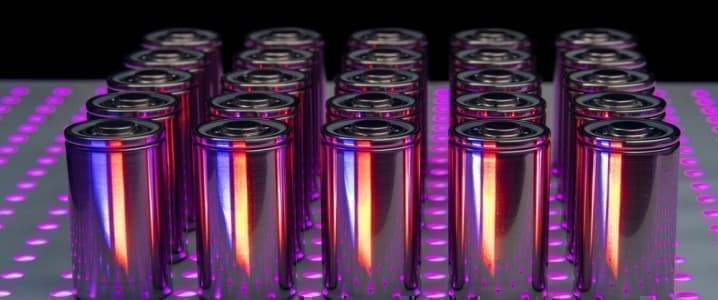Tokyo University of Science is researching magnesium as a promising candidate for an energy carrier in next-generation batteries. For now the cycling performance and capacity of magnesium batteries need to improve if they are to replace lithium-ion batteries.
The TUS research team focused on a novel cathode material with a spinel structure. Following extensive characterization and electrochemical performance experiments, they have found a specific composition that could open doors to high-performance magnesium rechargeable batteries.
Currently lithium-ion batteries have remained unrivaled in terms of overall performance for several applications, as evidenced by their widespread use in everything from portable electronics to cellular phone base stations. However, they suffer from a few important disadvantages that are difficult to ignore.
For one, lithium is rather expensive, and the fact that it is being mined at an extreme pace does not help. Moreover, the energy density of lithium-ion batteries is not enough to grant autonomy to electric vehicles and heavy machinery. These concerns, coupled with the fact that the batteries are highly unsafe when punctured or at high temperatures, have caused scientists to look for alternative technologies.
Looking at another chemistry
Among the various elements being tested as efficient energy carriers for rechargeable batteries, magnesium (Mg) is a promising candidate. Apart from its safety and abundance, Mg has the potential to realize higher battery capacities. However, some problems need to be solved first. These include the low voltage window that Mg ions provide, as well as the unreliable cycling performance observed in Mg battery materials.
To tackle these issues, a research team led by Vice President and Professor Yasushi Idemoto from Tokyo University of Science, Japan has been on the lookout for new cathode materials for Mg batteries. In particular, they have been searching for ways to improve the performance of cathode materials based on the MgV (V: vanadium) system.
The researchers focused on the Mg1.33V1.67O4 system but substituted some amount of vanadium with manganese (Mn), obtaining materials with the formula Mg1.33V1.67−xMnxO4, where x goes from 0.1 to 0.4. While this system offered high theoretical capacity, more details about its structure, cyclability, and cathode performance needed to be analyzed to understand its practical utility. Accordingly, the researchers characterized the synthesized cathode materials using a wide variety of standard techniques.
First, they studied the composition, crystal structure, electron distribution, and particle morphologies of Mg1.33V1.67−xMnxO4 compounds using X-ray diffraction and absorption, as well as transmission electron microscopy. The analyses showed that Mg1.33V1.67−xMnxO4 has a spinel structure with a remarkably uniform composition.
Next, the researchers conducted a series of electrochemical measurements to evaluate the battery performance of Mg1.33V1.67−xMnxO4, using different electrolytes and testing the resulting charge/discharge properties at various temperatures.
The team observed a high discharge capacity for these cathode materials – especially Mg1.33V1.57Mn0.1O4 – but it also varied significantly depending on the cycle number. To understand why, they analyzed the local structure near the vanadium atoms in the material.
Prof. Idemoto explained, “It appears that the particularly stable crystal structure along with a large amount of charge compensation by vanadium leads to the superior charge-discharge properties we observed for Mg1.33V1.57Mn0.1O4, Taken together, our results indicate that Mg1.33V1.57Mn0.1O4 could be a good candidate cathode material for magnesium rechargeable batteries.”
Satisfied with the present findings and hopeful about what is to come, Prof. Idemoto concluded, “Through future research and development, magnesium batteries could surpass lithium-ion batteries thanks to the former’s higher energy density.”
Indeed, substituted MgV systems could eventually lead to the much awaited next-generation batteries. Let us hope the highly anticipated alternative to lithium for our rechargeable battery needs will be realized soon.
***
As the political pressure to electrify continues to increase the battery demand is sure to increase as well. Lithium, already quite up in price and processed in countries less than friendly to the free world, needs capable competition.
There are several chemistries in research now. Before too very long one or more is going to offer capable and competent competition. Just how much less consumer cost and performance is yet to be seen. The lower cost break will need to be fairly substantial, as the capital commitment to a competitive chemistry will be high.
ADVERTISEMENT
For now as Prof. Idemoto noted, there is still research to do.
In larger capacity installations magnesium attributes might be quite a driver. Lower cost, more capacity and safer might just start a market rush.
Now if the grid could be made capable of getting everything charged up – deep electrification might be possible.
By Brian Westenhaus via New Energy and Fuel
More Top Reads From Oilprice.com:
- Relations Sour Between China And Russia As Ukraine War Continues
- Saudi Arabia’s Oil Exports Hit A 3-Month High In January
- U.S. Says Kosovo And Serbia Could Be Close To Normalizing Relations

















